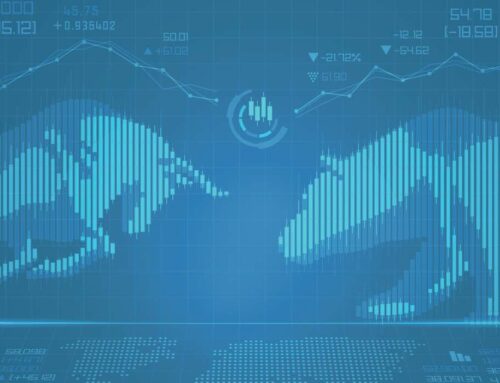July 2022 – Market Update
Inflation ticked up once again in June, with the Consumer Price Index increasing 9.1% from the year prior, up from May’s 8.6% increase.1
Price increases were spread broadly across the economy, though surging energy prices accounted for almost half of the overall increase. Pain at the pump in June drove headlines with gasoline up 59.9% and overall energy up 41.6% over the year. If there is any silver lining, core inflation, which excludes food and energy, slowed for the third month, rising “only” 5.9% over the year, down from 6.0% in May and 6.5% in March.
Accelerating inflation continues to put pressure on the Fed, prompting more aggressive rate increases than was anticipated just a few months ago and pushing up the market’s expectations of the Fed’s next decision. Following June’s inflation report on July 13th, the expectations for the outcome of the next meeting jumped sharply to an 80% probability of a 100 basis point hike.2 However, especially over the last few months, these expectations can shift abruptly. A few short weeks ago on July 5th that same probability was zero.
While the consumer may have taken a breather in May, they came back in June with retail sales climbing 1.0%.3 While spending at gas stations was driven by surging gas prices, increases in online shopping and furniture sales both exceeded their dips in May. Falling gas prices thus far in July will likely lower the headline data next month. It is also likely to boost consumer sentiment which has already improved from the preliminary July survey.4 Feelings about the current economic situation had their biggest jump since April last year and, looking ahead, consumers’ long-term inflation expectations fell to a one-year low of 2.8%.

Continued fears about the state of the economy resulted in increasing recession debates. The second quarter’s GDP report, coming July 28th, will be critical in either calming or fanning these fears. While the NBER makes official recession calls, how resilient, or not, the economy has been over the quarter will likely be an important input into what the rest of the quarter, and year, may have in store. Though, if the US was in a recession over the last six months, it will be the first recession that hasn’t had multiple months of job losses, at least since nonfarm payrolls data began in 1939. The most recent month of job losses was December 2020.
The bottom line: There doesn’t appear any light at the end of the tunnel of the Fed and inflation continuing to rule the day. The market’s focus will likely turn to the end of July with both the Fed decision as well as the report second-quarter GDP report coming out on back-to-back days. Concern over the state of the economy has been simmering and these two events may well shape the narrative around the third quarter. In the meantime, will continue to remain comfortable with our net defensive positioning at this time.
1 Source: US Bureau of Labor Statistics
2 Source: CME FedWatch Tool
3 Source: Census Bureau
4 Source: University of Michigan





